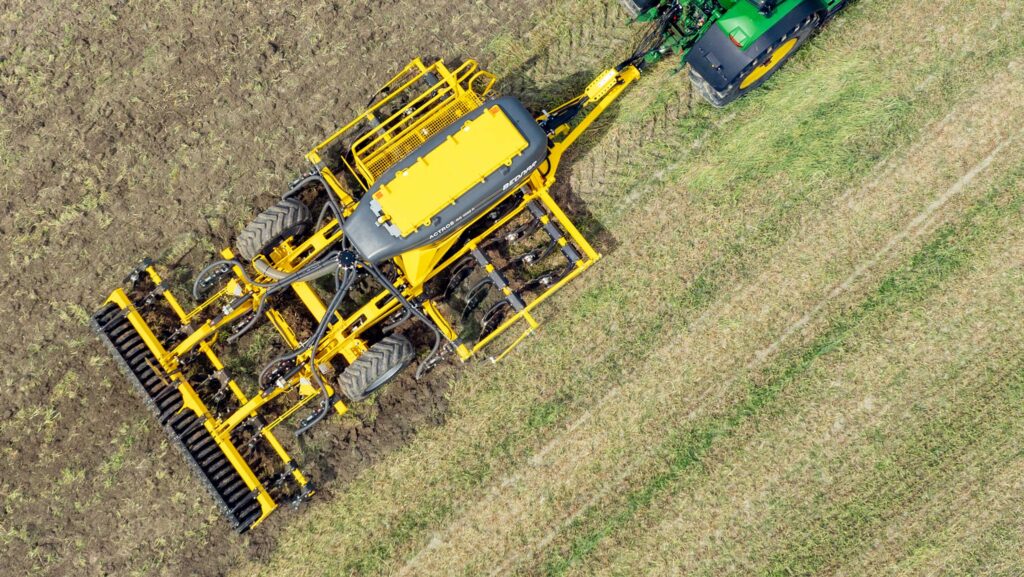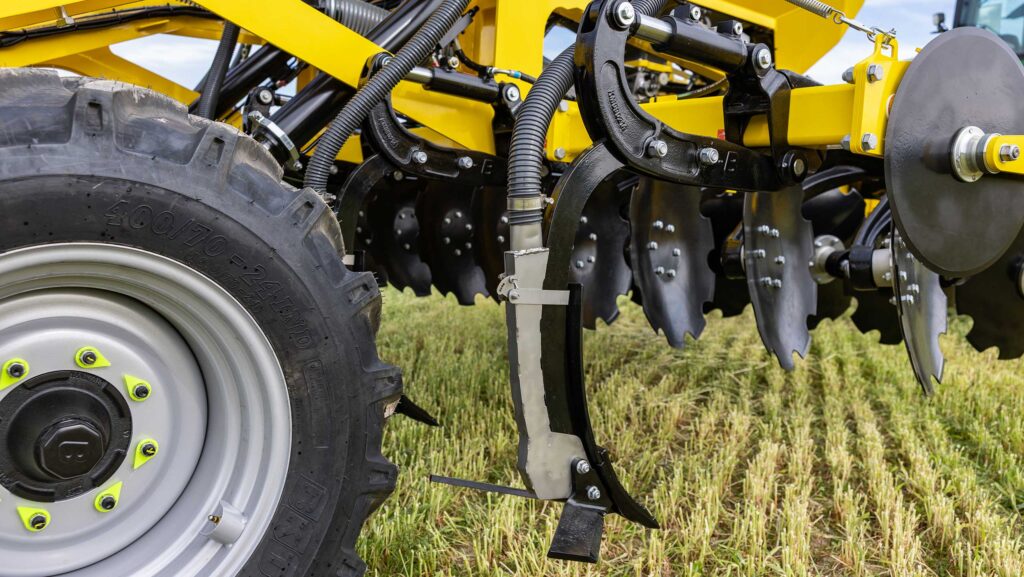Bednar updates Actros RO disc and tine cultivator
 The 4m Bednar Actros RO Gen II with optional seeding kit © Bender
The 4m Bednar Actros RO Gen II with optional seeding kit © Bender The latest tillage tool from Bednar may look like a seed drill in the accompanying pictures but is actually a combination implement for surface cultivation and deeper soil working – albeit with a new air seeder option.
This second-generation Actros RO deploys two rows of 690mm notched discs set at an angle to cultivate the surface aggressively and start mixing residues and soil.
See also: Tips for picking the best cultivator wearing metal
Then come two rows of wide-spaced rigid tines with a choice of points and wings to lift and shatter compacted layers beneath the surface with the aim of improving water infiltration and aeration to a depth of up to 350mm.
Soil is further tumbled to mix in trash by deep-notched discs, after which a roller consolidates the resulting tilth to leave as level a surface as possible, retain moisture and make it reasonably weatherproof.
Longer chassis
The Gen II version has a longer trailed chassis allowing optional break-back impact protection mechanisms to be installed on the heavy tines.
Double coil springs provide up to 500kg of resistance or a hydraulic setup adjustable up to 660kg to prevent the auto-reset legs from kicking back.
Also, Bednar has changed the disc mounting arm design up front, replacing a multi-arm welded structure with a single arm of cast iron said to increase mechanical strength and simplify maintenance.
Hydraulic working depth adjustment for the tines uses integrated spacers, and an additional hydraulic cylinder automatically alters the discs’ working depth to maintain a consistent relationship.

Hydraulic auto-reset tine protection is a new option © Bednar
The Actros RO Gen II is available in 3m and 4m sizes for 180-370hp tractors.
The 4m version is available, as the pictures highlight, with a 2,800-litre pressurised hopper, an external distribution head, and conveying tubes for starter fertiliser placement or seeding.
The hopper can be equipped with fill level sensors and operated through an isobus terminal with potential for remote calibration using a mobile device app.

